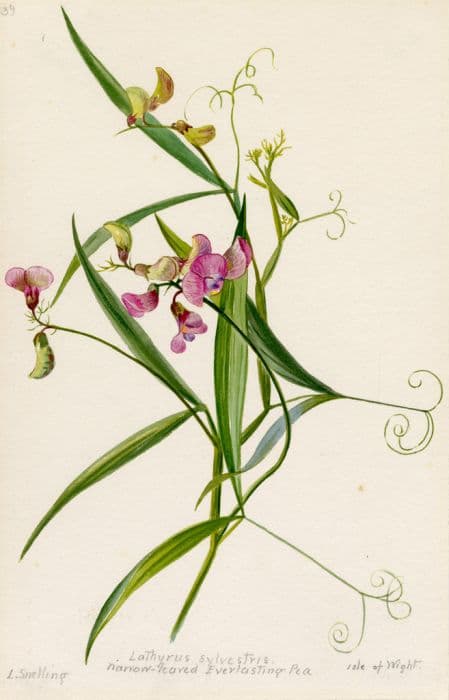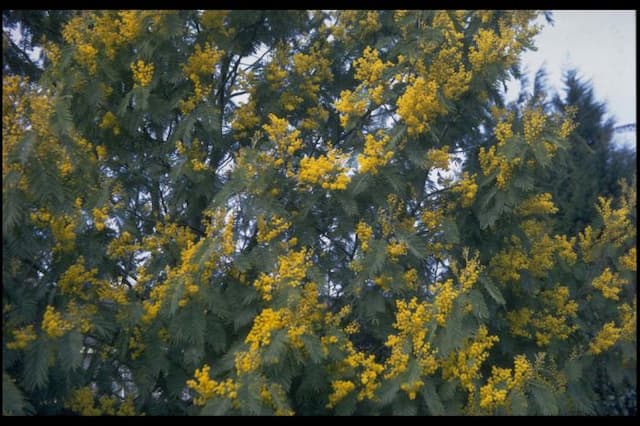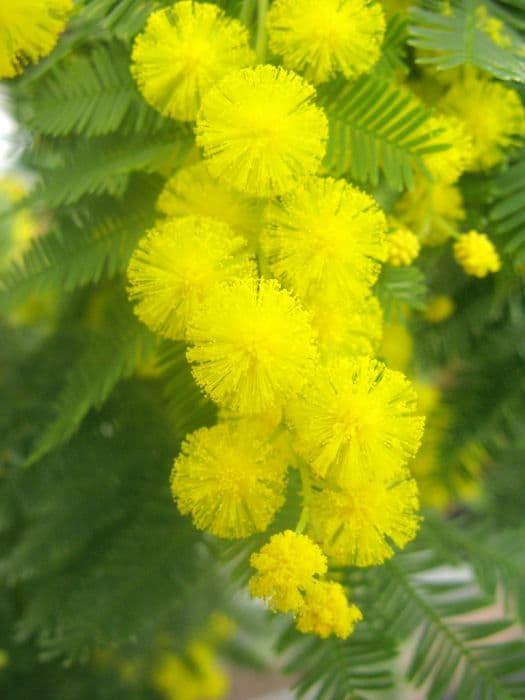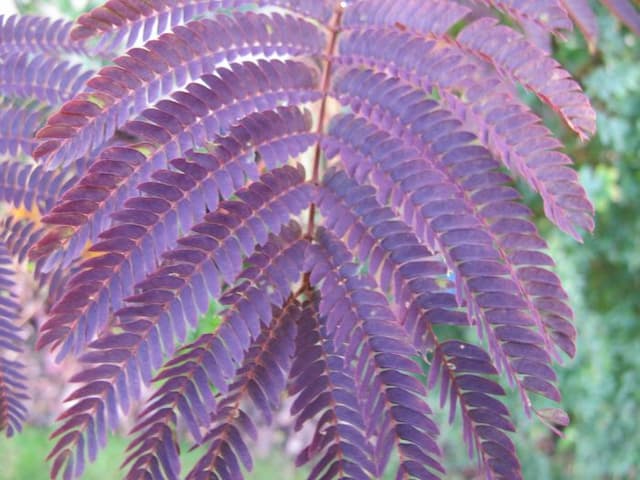Flat pea Lathyrus sylvestris

ABOUT
The plant commonly known as perennial pea or everlasting pea is characterized by its climbing nature and its ability to attach to supports via tendrils. These tendrils emerge from the tips of leaflets, allowing the plant to ascend and sprawl over other vegetation or structures. The stems are slender and somewhat winged, contributing to an overall appearance that is both attractive and vigorous in growth. The foliage of this plant consists of bright green leaves that are pinnate, meaning they are composed of multiple leaflets arranged opposite each other along a central axis. The individual leaflets are lance-shaped, with a pointed tip and a smooth edge, delivering a sleek and clean overall look to each leaf. Flowers are a prominent feature of the perennial pea, typically blooming in clusters. The flowers showcase a striking hue, usually in shades of red, pink, or purple, with a banner, wings, and keel structure typical of flowers in its family. These vibrant and ornamental flowers provide a splash of color and are a source of visual interest throughout their blooming season. The seeds develop in pods, which are initially green but mature to a brown color as they dry. The pods house several seeds and are flattened and elongated in shape. Each of these characteristics contributes to an appealing ornamental plant that is often sought after for gardens and naturalized areas for its visual appeal and ease of care.
About this plant
 Names
NamesFamily
Fabaceae.
Synonyms
Flat Pea, Narrow-Leaved Everlasting-Pea, Everlasting Pea, Narrowleaf Everlasting Pea, Slimleaf Everlasting Pea, Perennial Peavine, Wild Pea, Forest Pea.
Common names
Orobus sylvestris, Lathyrus montanus, Lathyrus sylvestris var. montanus, Orobus heterophyllus.
 Toxicity
ToxicityTo humans
The plant known commonly as flat pea contains a neurotoxic amino acid called ODAP (β-N-oxalyl-L-α,β-diaminopropionic acid) which can cause lathyrism when consumed in large quantities or over a prolonged period of time. Lathyrism is a serious neurological disease that can result in paralysis, muscle atrophy, and may lead to a difficulty in breathing and ultimately could be fatal. The condition is primarily associated with chronic consumption and the symptoms may not be immediate.
To pets
Flat pea carries the same risks for pets as it does for humans. The neurotoxic ODAP can cause lathyrism in animals that consume significant amounts of the plant. The symptoms in pets can include weakness, changes in gait, paralysis, particularly in the hind limbs, and potentially fatal respiratory problems if the condition progresses. Chronic exposure is necessary for the development of symptoms, as acute poisoning is less common. Owners should prevent their pets from ingesting this plant to avoid the risk of lathyrism.
 Characteristics
CharacteristicsLife cycle
Perennials
Foliage type
Deciduous
Color of leaves
Green
Flower color
Pink
Height
3-6 feet (0.9-1.8 meters)
Spread
2-3 feet (0.6-0.9 meters)
Plant type
Climber
Hardiness zones
4
Native area
Europe
Benefits
 General Benefits
General Benefits- Nitrogen Fixation: Lathyrus sylvestris, commonly known as flat pea, has the ability to fix atmospheric nitrogen, enhancing soil fertility without the need for chemical fertilizers.
- Forage for Animals: It serves as a source of forage for livestock, providing a nutritious feed supplement.
- Soil Erosion Control: The flat pea’s deep root system helps stabilize the soil and prevent erosion.
- Wildlife Habitat: It provides habitat and food for various wildlife species, particularly as a host for butterfly larvae.
- Biodiversity Support: By hosting insects and serving as part of the food web, flat pea contributes to overall biodiversity in its native ecosystem.
- Ornamental Use: With its attractive flowers, flat pea can be used as an ornamental plant in gardens and landscaping projects.
 Medical Properties
Medical Properties- This plant is not used for medical purposes.
 Air-purifying Qualities
Air-purifying QualitiesThis plant is not specifically known for air purifying qualities.
 Other Uses
Other Uses- As a natural dye: The flowers and young shoots of Lathyrus sylvestris, also known as flat pea, may be used to produce a yellow natural dye for textiles.
- Bioindicator: Flat pea can serve as a bioindicator, revealing the health of an ecosystem, especially in relation to nitrogen levels in the soil.
- Soil stabilization: Its robust root system helps stabilize soil and prevent erosion on embankments and hillsides.
- Livestock feed: While not common and with the risk of lathyrism when consumed in large quantities, it can be used as an emergency feed for livestock due to its high protein content.
- Green manure: Flat pea can be grown as a cover crop and then plowed into the soil to act as green manure, improving soil fertility.
- Wildlife habitat: Its dense foliage provides shelter and habitat for various wildlife species.
- Flower arrangements: Fresh or dried, flat pea flowers can be used in floral arrangements for their appealing form and color.
- Educational resource: Flat pea can be used as a plant specimen for educational purposes in botany or agriculture classes to illustrate nitrogen fixation.
- Crafts material: Dried stems and seed pods of the flat pea can be utilized in making rustic crafts and decorations.
- Companion planting: Lathyrus sylvestris can be used in gardens to attract beneficial insects and as a companion plant to crops that benefit from its nitrogen-fixing abilities.
Interesting Facts
 Feng Shui
Feng ShuiThe Narrow-leaved Everlasting Pea is not used in Feng Shui practice.
 Zodiac Sign Compitability
Zodiac Sign CompitabilityThe Narrow-leaved Everlasting Pea is not used in astrology practice.
 Plant Symbolism
Plant Symbolism- Persistent Growth: Lathyrus sylvestris, commonly known as 'flat pea,' tends to grow vigorously and persistently, and it symbolizes the resilience and determination to thrive in various conditions.
- Endurance: Flat pea is a hardy plant that can grow in tough environments. This characteristic is often seen as a symbol of endurance and the ability to withstand challenges.
- Independence: The ability of the flat pea to grow with minimal care can symbolize independence and self-sufficiency.
 Water
WaterFor the perennial sweet pea (Lathyrus sylvestris), watering should be done deeply and infrequently to encourage strong root development. It typically needs watering every 1 to 2 weeks, depending on the climate and soil conditions. During hot, dry periods, you may need to water once a week, providing about 1 gallon of water per plant for each watering session. Ensure the soil is moistened to at least 6 inches deep. Always check the top inch of soil for dryness before watering again to avoid overwatering.
 Light
LightPerennial sweet pea (Lathyrus sylvestris) thrives best in full sun to partial shade. The ideal spot for this plant is an area that receives at least 6 hours of direct sunlight daily, although it can tolerate some afternoon shade. Avoid placing it in deep shade, as this will reduce blooming and weaken the plant.
 Temperature
TemperaturePerennial sweet pea (Lathyrus sylvestris) prefers temperature conditions between 60°F and 75°F. It can survive short periods of colder temperatures down to about 30°F and can handle heat up to around 85°F. For optimal growth, maintaining temperatures within the preferred range is ideal as this plant does not tolerate extreme heat or frost well.
 Pruning
PruningPruning perennial sweet pea (Lathyrus sylvestris) promotes a bushy growth habit and can enhance flowering. The best time to prune is in late winter or early spring before new growth begins. Remove any dead or damaged stems and cut back up to one-third of the plant to shape it and encourage new growth. Prune after flowering if required to maintain the desired size and shape.
 Cleaning
CleaningAs needed
 Soil
SoilNarrow-leaved Everlasting Pea thrives in well-drained soil with a neutral to slightly alkaline pH, around 7.0 to 7.5. A good soil mix for this plant would combine garden soil, compost, and sand to improve drainage.
 Repotting
RepottingNarrow-leaved Everlasting Pea typically does not require frequent repotting and can be done every 2 to 3 years, or as needed when the plant outgrows its current container.
 Humidity & Misting
Humidity & MistingNarrow-leaved Everlasting Pea prefers moderate humidity levels but is quite adaptable and can tolerate the drier air typical of many outdoor environments.
 Suitable locations
Suitable locationsIndoor
Ensure bright light and stake vines for Narrow-leaved Everlasting Pea.
Outdoor
Plant in full sun, support climbing, normal garden soil.
Hardiness zone
4-8 USDA
 Life cycle
Life cycleLathyrus sylvestris, commonly known as flat pea or narrow-leaved everlasting-pea, begins its life cycle as a seed, which germinates in early spring to produce small, tender shoots. These shoots grow into vines that can reach up to two meters long, supported by tendrils that allow the plant to climb neighboring vegetation. The leaves develop into compound structures with leaflets and stipules. By late spring to early summer, the plant produces pink to reddish-purple, pea-like flowers that are pollinated by insects. Following pollination, the flowers develop into pods, each containing several seeds. As autumn approaches, the plant's aerial parts die back, dropping the mature pods which release the seeds to the soil, completing the life cycle as the plant overwinters as seeds.
 Propogation
PropogationPropogation time
Spring to Summer
Propogation: Lathyrus sylvestris, commonly known as the flat pea, is typically propagated through its seeds. The ideal time for sowing these seeds is in spring when the soil has warmed up to around 60°F (15.6°C). To enhance germination, it is often recommended to scarify the seeds by gently nicking the seed coat with a file or to soak them in water overnight before planting. Once prepared, seeds should be sown directly into well-drained soil at a depth of about 1 inch (2.54 cm), spaced approximately 2 to 3 inches (5 to 7.6 cm) apart. Seedlings usually emerge within two to three weeks, after which they can eventually be thinned or transplanted to give the plants ample space to grow. This method capitalizes on the flat pea's natural reproductive strategy, making it a straightforward and effective way to propagate the plant.









